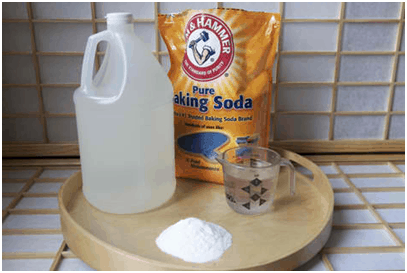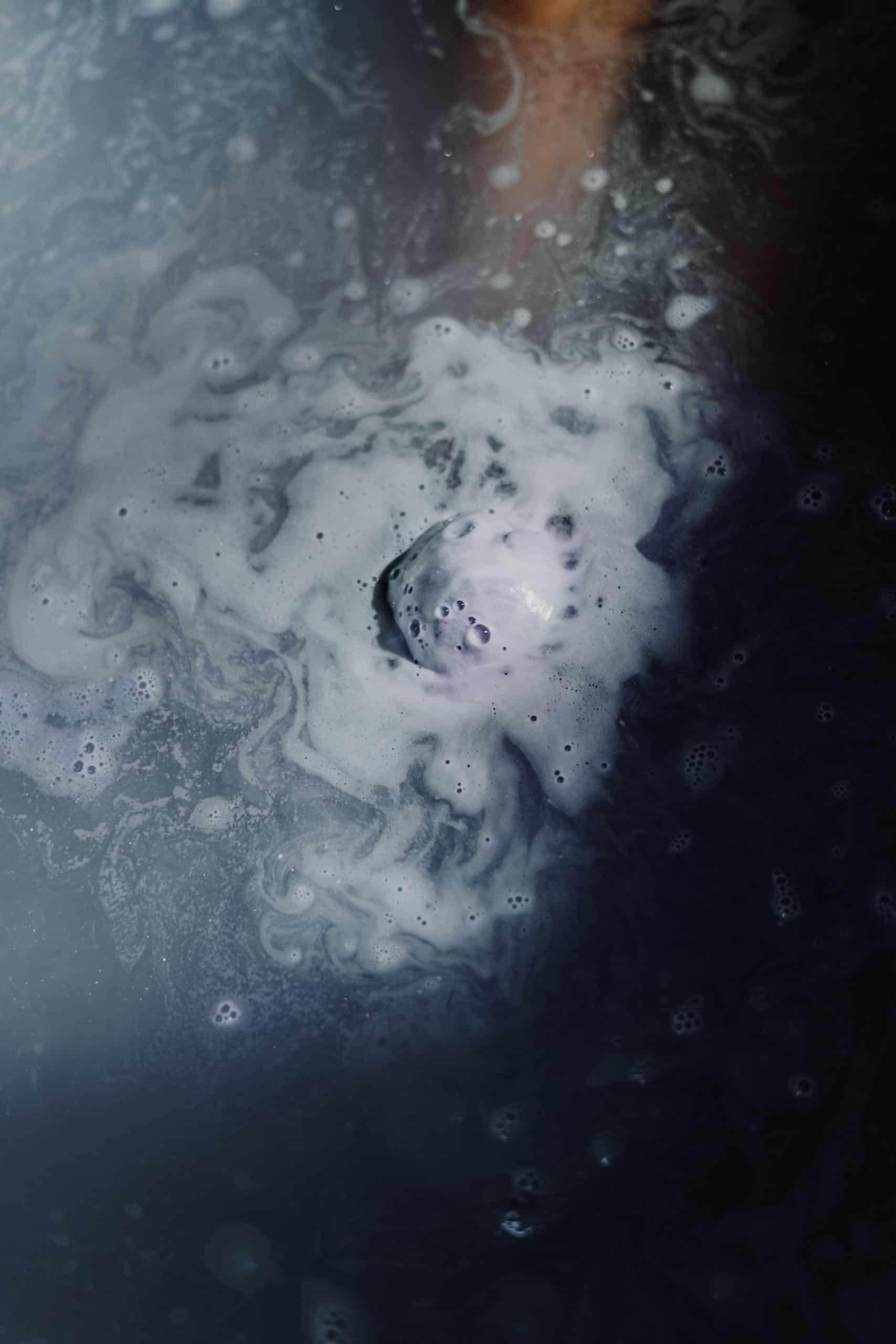Next to sinks and toilet drains, the bathtub drain gets the most use of any drain in the typical household. Each day, hair, soap, and hair care products go down the drain. Over time, you may notice that your bathtub is starting to drain more slowly than usual. That’s a sure sign that a clog is developing.
Causes of Bathtub Drain Clogs
Most bathtub drain problems are caused by a combination of hair and soap scum. The longer you wait to resolve a slow drain, the more likely a complete blockage will occur. If you’re dealing with a slow draining tub, you may be able to fix the problem pretty easily.
Most often, bathtub clogs are located near the top of the drain, where the bathtub and the drain meet. These surface level clogs are usually caused by hair that accumulates during baths and showers. To remove a clog like this, you’ll need a hook that can grab the hair and pull it out.
To make your own hook, use needle-nose pliers to bend a wire hanger into a long hook. Remove the drain stopper and strainer. Then slip the hook into the drain and fish out the clog. The hair might be wrapped around the crossbars at the top of the drain. If this happens, use scissors to cut the hair until it can be removed.
If the hook doesn’t work or if the hook doesn’t catch anything, the clog is lower in the drain than you can reach. If this is the case, you can try a homemade drain cleaner.

Pour a half cup of baking soda down the drain followed by a cup of plain, white vinegar. Let the two ingredients foam for 10-20 minutes. Then run boiling water down the drain to help clear the clog. Wait for a few minutes and then run the hot water again to make sure the drain is draining properly.
You may be tempted to try chemical drain cleaners but these products are not usually a good idea. The caustic chemicals in these products make them dangerous if they splash onto your skin or in your eyes. The chemicals designed to cut through clogs are corrosive and can damage both your bathtub fixtures and the interior of your pipes.
How to Clear a Completely Clogged Bathtub Drain
The above methods work for slow drains but are not effective against a completely clogged drain. From easiest to most difficult, here are three ways to clear a clogged bathtub drain:
1. Clean the Strainer and Stopper
The strainer is meant to catch large items but some things like soap and hair can slip by. There are several types of bathtub drain stoppers and some are easier to remove and clean than others.
Once you remove the drain stopper, you may be able to see what is clogging the drain and remove it using a pair of tweezers or a homemade hook. Sometimes, the strainer and bottom of the stopper have become clogged with grime and hair and simply needed to be thoroughly cleaned. If cleaning the strainer and stopper doesn’t solve the problem, it’s time to try a plunger.
2. Use a Plunger
There are specific plungers made for sinks and bathtubs. There should only be a couple of inches of water in the tub in order to get the proper suction. If there is an excessive amount of standing water in the tub, remove as much as possible before proceeding.
Plungers work on suction power so you will need to seal the overflow drain with duct tape before plunging. Place the plunger directly over the drain and then press and pull the plunger in rapid succession several times. Repeat the process until the drain starts to flow freely. If plunging several times doesn’t clear the clog, the drain needs to be snaked.
3. Snake the Overflow Drain
If the clog is further down into the drain or pipe, you’ll need more time and a plumber’s snake. A snake is a flexible wire with an auger on one end. The auger has multiple interlocking hooks that allow the claw to grab substances inside the pipe. It’s flexible so it fits inside a drain’s traps and bends. Drain snakes can be purchased from home improvement stores.
Using a snake takes some time and practice to do correctly. To snake a bathtub, you’ll need to go through the overflow drain. Once you remove the overflow plate under the faucet, insert the snake down the drain and keep uncoiling it until you start to feel resistance. That’s how you know you’ve found the clog. Keep rotating, and then see if you can catch the clog and remove it. If you can’t catch the clog on the snake, it’s likely a solid object and a plumber will need to be called.
If you're dealing with a stubborn clog you can’t clear on your own, it’s best to call a professional plumber to resolve the problem.
Preventing Clogs from Developing

Prevention is always best. Once a drainage problem has been resolved, don’t forget to minimize the possibility of your drain becoming clogged again. There are a few simple steps that will help you avoid bathtub clogs:
1. Use a Drain Trap
If you don’t have a drain trap in your bathtub, it’s a good idea to install one. Replacing a missing or broken drain trap helps prevent hair and other solids from flowing down the drain. Drain traps are inexpensive and easy to find in any hardware or home improvement store.
2. Minimize Soap Scum
The white soap scum that accumulates on your shower and tub walls also collects in drains over time and if enough builds up, can create a blockage. Avoid using too much soap or shampoo while bathing or showering. You should also avoid dropping small pieces of bar soap down the drain. Because it’s a solid, small pieces of bar soap can actually get caught in your bathtub or shower drain and combine with hair and other debris to create a tough clog.
3. Keep Dirt, Mud and Sand Out of Your Drain
Small amounts of mud, dirt, and sand can accumulate over time inside a bathtub drain and eventually lead to a clog. This is especially true if the water flow isn’t strong enough to wash debris thoroughly down the drain pipe. You can prevent this problem by rinsing off outside to remove as much dirt, mud and sand as possible before bathing or showering.
4. Hard Water
A common cause of clogged drains is the result of the minerals in the water. Hard water is full of minerals that build up and over time can prevent proper drainage. If you have hard water, the best solution is to have a water softener installed in your home.
5. Protect Your Drain
Older homes are prone to clogged drains. Homeowners should avoid emptying mop buckets, carpet shampooer waste or any other wastewater combined with dust, dirt, or pet hair down a bathtub drain. Dumping wastewater outside and using a hair trap when shampooing pets will help protect your bathtub drain.
When to Call in a Professional Plumber
If you’re experiencing frequent clogs or slow moving drains, it’s time to call a qualified plumbing professional to diagnose and repair the problem. A professional plumber can use a special camera to locate clogs and obstructions deep inside your plumbing system. Licensed plumbers have the right equipment and experience to remove trapped debris and make any necessary repairs.
For all of your plumbing needs in the Los Gatos area, call Simply Green Plumbing, Sewer & Rooter at (408) 716-1686, or contact us online to schedule an appointment. Our Los Gatos technicians have over 30 years of plumbing experience and they are ready to help you with all of your plumbing problems no matter how big or small.
